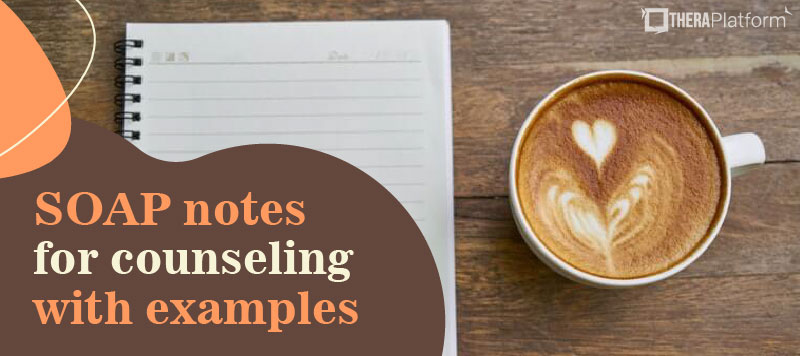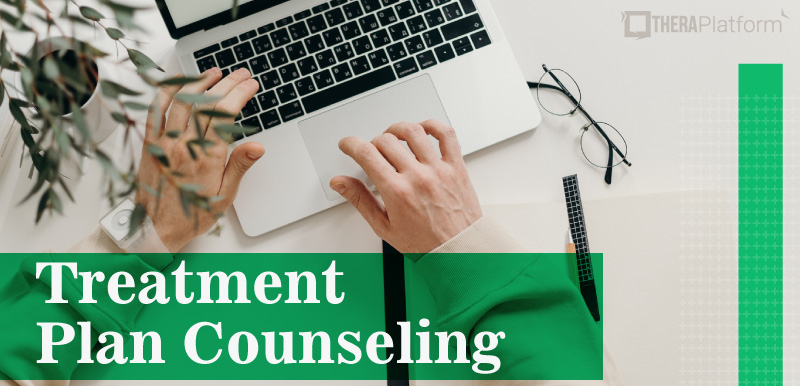Anxiety ICD 10

Generalized anxiety disorder ICD 10 code, F 41.1, and other anxiety ICD 10 codes for panic disorder, social phobias and other phobias will be discussed in this blog. Knowing the criteria of anxiety disorders will help you with the insurance billing and documentation process.
→ Click here to enroll in our free on-demand Insurance Billing for Therapists video course [Enroll Now]
We have all felt anxious at some point in our lives. But for many people, anxiety can be highly debilitating. It is estimated that over 30 percent of American adults will experience an anxiety disorder during their lifetime.
Mental health professionals are given the difficult task of evaluating clients and providing an appropriate diagnosis. Fortunately, they do have help.
The International Statistical Classification of Diseases and Related Health Problems 10th Revision (ICD-10) categorizes multiple types of anxiety ICD 10 codes and associated criteria to aid clinicians in the assessment of anxiety disorders.

The anxiety ICD 10 codes serve multiple purposes. First, they provide specific diagnoses that provide a path towards treatment.
Second, these same anxiety ICD 10 codes are used for insurance billing. An accurate diagnosis can have a major impact on developing an effective treatment plan as well as obtaining financial reimbursement. Here is what you need to know about diagnosing anxiety disorders using the anxiety ICD 10 codes.
What are the anxiety ICD 10 codes?
Anxiety disorders are those where anxiety is the major symptom and can occur in a variety of situations. The following are among the most common anxiety disorders as listed in the ICD-10.
Here is a handy table that lists types of anxiety ICD 10 codes:
Type of Anxiety Disorder | ICD - 10 Code |
|---|---|
F 41.1 | |
F 41.0 | |
Social Phobia | F 40.1 |
Specific (Isolated) Phobias | F 40.2 |
F41.1 Generalized Anxiety Disorder ICD 10 code
Generalized anxiety disorder ICD 10 code, F 41.1, is the most often used ICD-10 code for mental health disorders.
It is estimated that 2.7 percent of adults have had GAD in the past year and 5.7 percent will experience it at some point in their lifetime.
Criteria for generalized anxiety disorder ICD 10 code
- At least six months with significant tension, worry, and feelings of apprehension, about everyday events and problems.
- At least one symptom out of the following list of items must be present: palpitations or pounding heart, accelerated heart rate, sweating, and trembling or shaking.
- Including those symptoms stated above, at least three other symptoms must be present.
These may include:
- Dry mouth
- Difficulty breathing
- Feeling of choking
- Chest pain or discomfort
- Nausea or abdominal distress
- Feeling dizzy
- Derealisation or depersonalization
- Fear of losing control, passing out, or dying
- Hot flushes or cold chills
- Numbness or tingling sensations
Some clinicians make the mistake of using GAD as a throwaway diagnosis. The thinking goes something like this: If a client has some sort of anxiety but it doesn’t fit into another anxiety disorder then it must be GAD.
While GAD does reflect a more generalized form of anxiety, it does have specific criteria that must be met. Generalized anxiety disorder ICD 10 code, F 41.1 is not the same as F41.9, anxiety disorder unspecified, but is often used like it.

F41.0 Panic Disorder ICD 10 code
Panic disorder is one of the scariest anxiety disorders. It has been described as feeling out of control, possibly like a heart attack. An estimated 2.7 percent of U.S. adults had panic disorder in the past year and 4.7 percent experience panic disorder at some time in their lives.
Criteria for panic disorder ICD 10 code
- Recurrent attacks that are not consistently associated with a specific situation or object, and often occur spontaneously.
- At least four symptoms must be present, one of which must be an autonomic arousal symptom such as heart palpitations, sweating, trembling or shaking, and dry mouth.
- Other symptoms may include chest pain, numbness, nausea, stomach problems, dizziness, depersonalization, fear of losing control, and fear of dying.
A panic attack is characterized by all of the following:
- An episode of intense fear or discomfort.
- Starts abruptly, often without any warning.
- Escalates to a peak within a few minutes and lasts at least several minutes.
The most important consideration with panic disorder is that physical problems must be ruled out. Autonomic arousal, for example, might be caused by health conditions rather than be related to anxiety.
It is not uncommon for many clients to have already seen a doctor about these symptoms before seeking help from a mental health professional.
Watch this video to learn common insurance billing struggles and solutions
→ Start My Free Trial
→ Start My Free Trial
F 40.1 Social Phobia (Social Anxiety Disorder) ICD 10 code
To avoid any confusion, you need to know that social phobia is also known as social anxiety disorder. In fact, the Diagnostic and Statistical Manual of Mental Disorders, Fifth Edition (DSM-V) refers to it as social anxiety. An estimated 7.1% of U.S. adults had social phobia disorder in the past year and a whopping 12.1 percent of U.S. adults experience social phobia at some time in their lives.
Criteria for social phobia (social anxiety disorder) ICD 10 code
- One of the following two symptoms must be present for the diagnosis of social phobia. These fears must be exhibited in social situations, such as speaking in public and enduring gatherings such as parties, meetings, and classrooms.
- Significant fear of being the focus of attention or behaving in a way that will be embarrassing or humiliating.
- Significant avoidance of being the focus of attention or situations in which there is fear of behaving in an embarrassing or humiliating way.
- Significant emotional distress is caused by the symptoms or the avoidance of the situation.
- Symptoms only occur when confronting the anxiety-provoking situation or thinking about it.
At least two symptoms of anxiety (see #2 for GAD above) will be present when confronting the feared situation.
In addition, one of the following symptoms is included:
- Blushing
- Fear of vomiting
- Urgency or fear of urination or defecation
The key to a correct diagnosis of social phobia is the severity of the disorder. Many people have anxiety in social groups or when they are made the center of attention (e.g., giving a speech in public).
What sets social phobia apart is the lengths someone will go to to avoid those situations. Or, how they feel incapacitated if they find themselves unable to escape.
→ Download My Free Insurance Billing Guide
F40.2 Specific (Isolated) Phobias ICD 10 code
Specific phobias are the most common of all anxiety disorders. An estimated 12.5 percent of American adults experience specific phobia at some time in their lives. The concept of specific phobia is familiar to most people and may include intense fear of heights, blood, and snakes.
Criteria:
- A chronic fear of a specific object or situation that is excessive or unreasonable.
- Exposure to the feared item or situation almost always leads to an immediate anxiety response, which may rise to the level of a panic attack.
- The person recognizes that the fear is excessive compared to the actual threat posed.
- The phobic situation is either avoided or endured with intense distress.
- The avoidance or distress during the feared situation interferes significantly with the person's normal functioning.
- The fear lasts for at least six months.
Like social phobia, the key to a correct diagnosis of a specific phobia is recognizing its severity. Many people have a fear of needle injection, for example, but not everyone will avoid it at any cost.
Individuals with specific phobias experience significant disruption to their lives when confronted with anxiety-provoking stimuli. What is more frustrating, they realize that their fear is often irrational.
Where are Obsessive-Compulsive Disorder (OCD) and Post-Traumatic Stress Disorder (PTSD) ICD 10 codes?
In the original composition of the ICD-10, OCD and PTSD were indeed considered anxiety disorders. In recent years, however, both disorders have been given their own category. Although anxiety remains a main component of both OCD and PTSD, it has been decided that there are many additional facets to those disorders that make them unique.
Anxiety is one of the most common and serious problems affecting people worldwide. Proper anxiety ICD-10 codes are integral for both treatment planning and insurance reimbursement.
Start 30-day Free Trial and explore TheraPlatform. HIPAA Compliant Video and Practice Management Software for Therapists.
How EHR and practice management software can save mental health providers time with insurance billing
EHR with integrated billing software and a clearing house, such as TheraPlatform, offers mental health providers significant advantages in creating an efficient insurance billing process. The key is minimizing the amount of time dedicated to developing, sending, and tracking medical claims through features such as automation and batching.
What are automation and batching?
- Automation refers to setting up software to perform tasks with limited human interaction.
- Batching or performing administrative tasks in blocks of time at once allows you to perform a task from a single entry point with less clicking.
Which billing and medical claim tasks can be automated and batched through billing software?
- Invoices: Create multiple invoices for multiple clients with a click or two of a button or set up auto-invoice creation, and the software will automatically create invoices for you at the preferred time. You can even have the system automatically send invoices to your clients.
- Credit card processing: Charge multiple clients with a click of a button or set up auto credit card billing, and the billing software will automatically charge the card (easier than swiping!)
- Email payment reminders: Never manually send another reminder email for payment again, or skip this altogether by enabling auto credit card charges.
- Automated claim creation and submission: Batch multiple claims with one button click or turn auto claim creation and submission on.
- Live claim validation: The system reviews each claim to catch any human errors before submission, saving you time and reducing rejected claims.
- Automated payment posting: Streamline posting procedures for paid medical claims with ERA. When insurance offers ERA, all their payments will post automatically on TheraPlatform's EHR.
- Tracking: Track payment and profits, including aging invoices, overdue invoices, transactions, billed services, service providers.
Utilizing billing software integrated with an EHR and practice management software can make storing and sharing billing and insurance easy and save providers time when it comes to insurance billing for therapists.
Resources
Theraplatform is an all-in-one EHR, practice management and teletherapy solution that allows you to focus more on patient care. With a 30-day free trial, you have the opportunity to experience Theraplatform for yourself with no credit card required. Cancel anytime. They also support different industries including mental and behavioral health therapists in group practices and solo practices.

More resources
- Therapy resources and worksheets
- Therapy private practice courses
- Ultimate teletherapy ebook
- The Ultimate Insurance Billing Guide for Therapists
- The Ultimate Guide to Starting a Private Therapy Practice
- Mental health credentialing
- Insurance billing 101
- Practice management tools
- Behavioral Health tools



